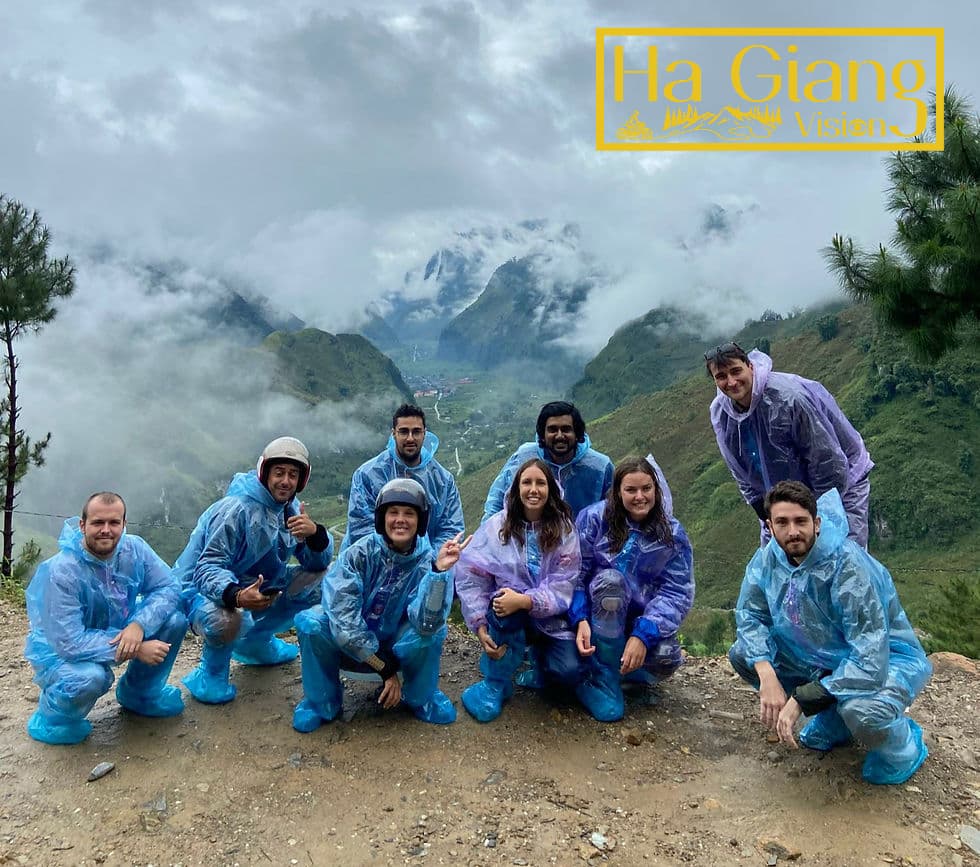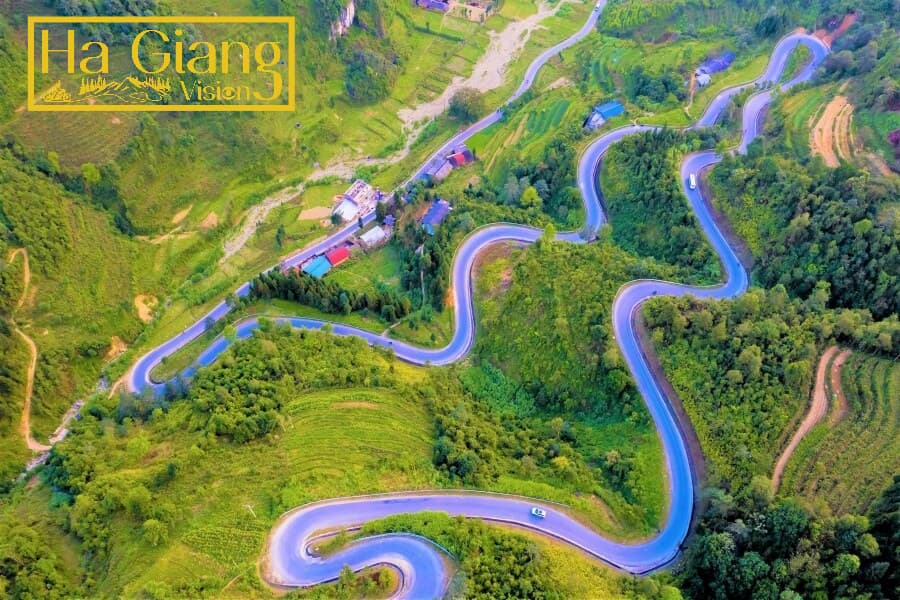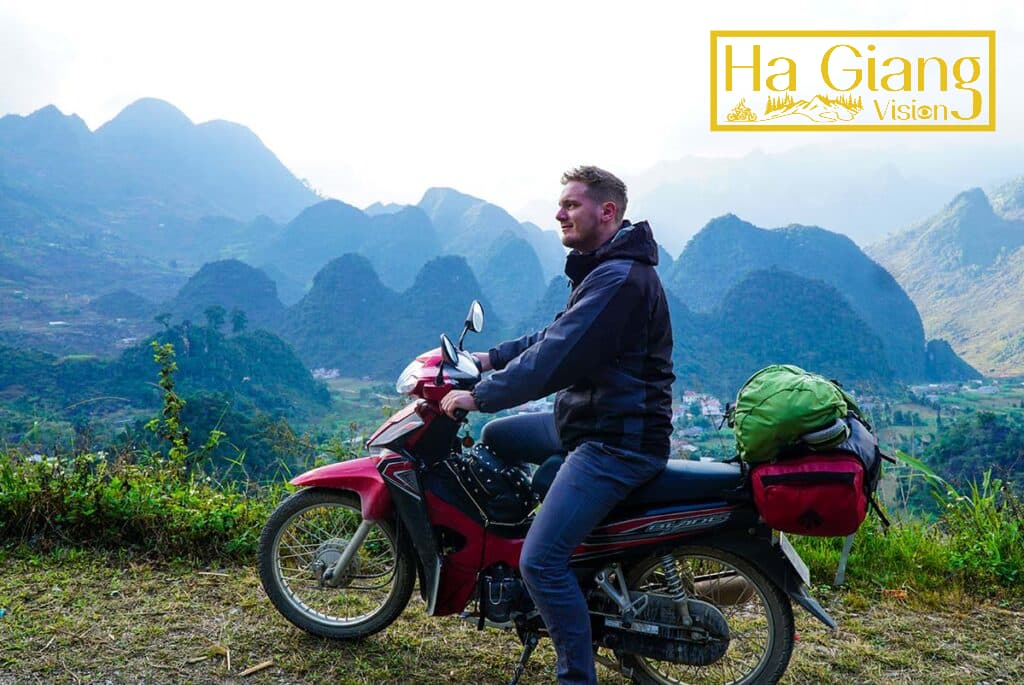
Is the Ha Giang Loop safe? It’s the question almost every traveler asks before committing to Vietnam’s most epic motorbike adventure. And honestly, it’s a fair concern. The Loop winds through steep mountain passes, sharp turns, remote villages, and unpredictable weather. But don’t worry! It’s not nearly as dangerous as people make it sound, especially if you go with the right mindset and the right people.
So let’s break it down. If you’re heading north from Hanoi (or from our Quiri Hostel in particular) and wondering whether the Ha Giang Loop is a safe choice, here’s what you should know.
Nope. You don’t have to be a motorbike expert to ride the Ha Giang Loop. Most backpackers doing the Loop have only minimal experience, or even none. That’s why Ha Giang Vision offers three main options:
Easyrider (you sit on the back while a local expert drives)
Ride Yourself (ideal if you’re confident with a semi-auto)
Sit Behind Your Friend (budget-friendly, but still risky if your friend isn’t skilled)
If you’ve never used a semi-automatic before, don’t stress. Ha Giang Vision gives you a test ride and safety lesson before you commit. They’ll also switch your bike out if you’re not comfortable.
The Ha Giang Loop is a mix of everything: smooth new roads, dirt tracks, steep hills, and cliffside curves. Some parts are wide and scenic, while others—like the famous Ma Pi Leng Pass—require slow, careful riding.
[caption id="attachment_2684" align="alignnone" width="900"] Is the Ha Giang Loop safe?[/caption]
Is the Ha Giang Loop safe?[/caption]
But here’s the good news: if you go with a guided group, you’ll always have a lead driver pacing the ride, checking conditions, and giving signals. Plus, there are built-in breaks at safe spots so you’re never pushed too far too fast.
The Loop is best done between March to May or September to November—dry, sunny, and cool. If you go in the rainy season (June–August), expect slippery roads and muddy paths, especially around Du Gia and remote villages.
In winter (Dec–Feb), morning fog can limit visibility and cold temps can make riding harder, especially if you’re wet. Tours like Ha Giang Vision plan around this and make adjustments on the spot, but solo riders might not know what’s coming.

Safety is about more than just roads and weather. It’s about who you ride with. With Ha Giang Vision, groups are kept between 8 to 14 people—small enough to feel personal, big enough to offer support.
If you ride with big-name hostels like Jasmine Tour, groups often merge into convoys of 20 to 50 riders. Even if your group starts small, you’ll likely end up surrounded by dozens of bikes. That leads to:
More dust and chaos on the road
Harder to communicate
Slower rescue or support if anything happens
Small groups allow for more flexible pacing, tighter communication, and faster support.

A safe ride starts with good equipment. Ha Giang Vision checks bikes every day, replaces helmets regularly, and provides:
Protective gear (helmets, gloves, elbow and knee pads)
Backpack straps so your gear doesn’t throw off your balance
Rain ponchos and waterproof bags

You also get a support vehicle in case of breakdowns or injuries. That’s something solo riders don’t have—and it’s a real risk if you’re hours from the nearest town.
Don’t ride tired, sick, or hungover
Take breaks if you’re cold or wet
Stick with your group and listen to your guide
Don’t treat this like a party loop. It’s not. Ha Giang is about nature, people, and the ride—not getting blackout drunk and crashing into a rice field
Want to do the Ha Giang Loop without worrying about sketchy bikes or reckless driving? Book with Ha Giang Vision and start your journey from Quiri Hostel in Hanoi, where your gear, bus ticket, and ride are all sorted.
Join a small group of backpackers who care more about the ride than the party.
Check tours at https://hagiangvision.com